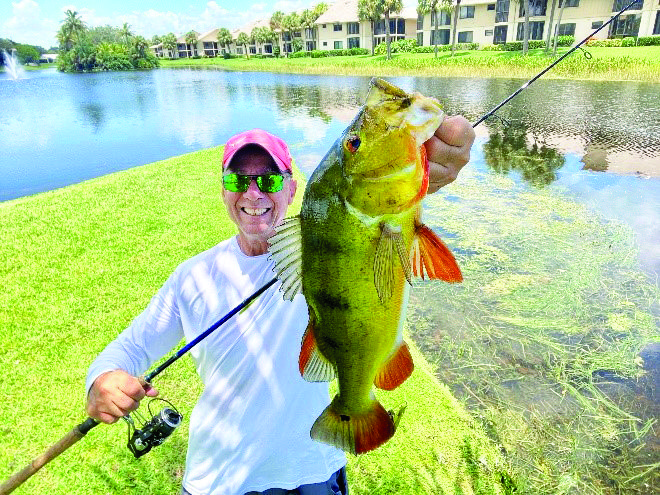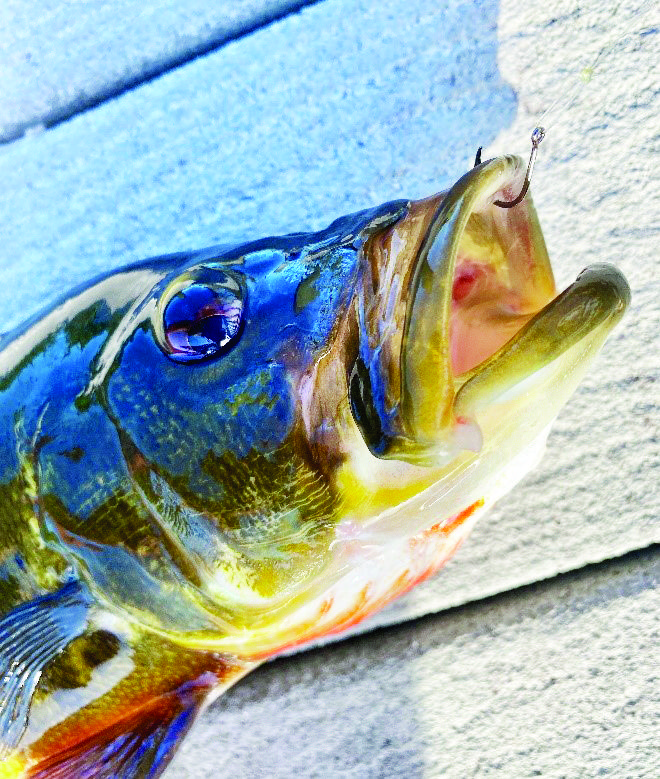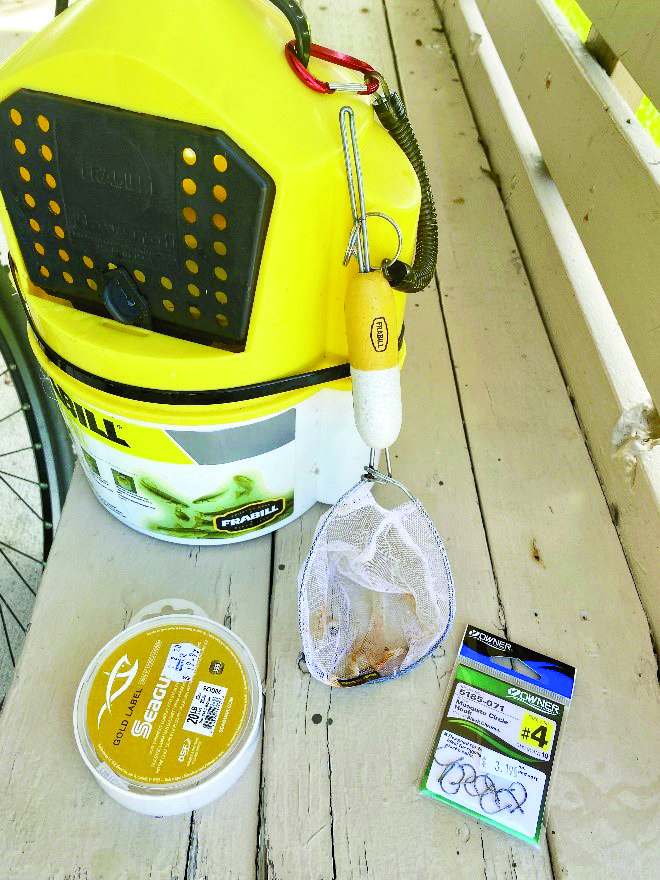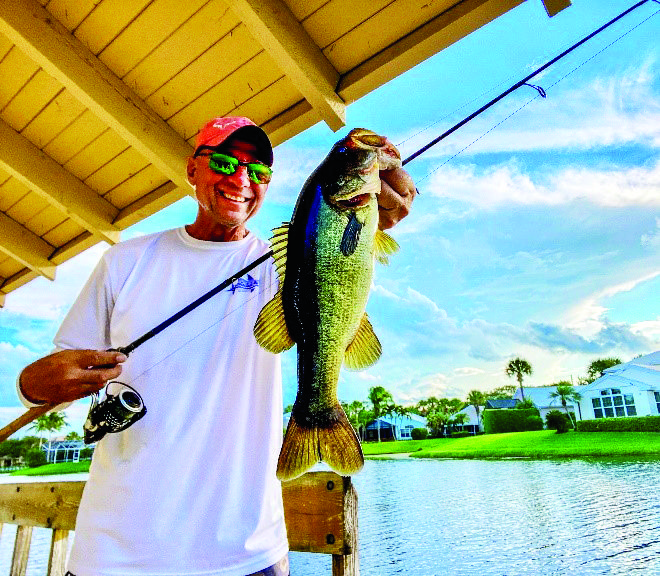By Mark Ambert Contributing Writer

Whenever I post a picture of a peacock bass, so many people ask “what kind of lures or bait are you using to catch those beautiful fish?” For the most part, I stick to lure fishing unless conditions require the use of bait. This is purely a personal preference and no reflection on which is better. Both play a role in the success of an angler. When I switch to bait however, I have one primary goal – to minimize the impact to fish being caught. I practice catch and release for all freshwater species. With this in mind, I decided to write an article covering the basics of live shiner fishing.

Not everybody catches fish using live bait although many believe it to be a surefire way to catch fish. There are no guarantees in fishing! General conditions that mandate the use of live bait for me usually start and end with weed beds. When a lake or canal is covered in weeds it can be very difficult to fish a lure porperly for success, especially if your target is peacocks and from shore. Peacock bass like things moving fast and with a minnow profile. They shy away from weedless plastic rigs for the most part. Live bait is a great option under these conditions and works great for most any fish.

To begin with I use an ultralight spin rod and reel for this type of fishing. I prefer a 7’ rod that I can use “cane pole” style to drop a shiner just outside a weedbed from shore. I use 20lb. PowerPro braid for the main line and 20lb. Seagur Gold Label Fluorocarbon 4’ leader. I for the most part, do not use bobbers but let my shiners swim naturally.

Now this is where it gets specific. I use only one hook type and size very specific to catch and release with shiners as the primary bait. Owner Mossquito Circle Hooks in size #4. This is a very small hook and smaller than what most would consider using. This is the secret to solid hookups, and safe catch and release. This hook is so small as not to adversely effect the fish. Using a three second count for setting the hook, most fish are caught right in the lip area where the hook can be easily removed. When the occasional fish swallows the hook just clip the line at the hook and leave it. I have never seen a fish hurt in this manner – the hook is very small and will work its way out of the fish quickly.
If a big fish is on the end of your line – set the drag appropriately, as the smaller hook may pull out under extreme pressure. I’ve landed many big fish using the rod properly, and with a lighter drag during the fight.

When fishing live shiners, I prefer small to mid size baits. They seem to hold up better to repeated casting and are more lively in the water. I do not allow the shiner to bury his nose in a weedbed, so pay attention to what it’s doing. I cast just beyond the weedline and allow them to swim freely. They will usually “duck for cover” and a gentle lift of the rod tip will clear them of the weeds. I keep them moving at all times by using the rod to lift them then recasting. This is key. Once a shiner is cast repeatedly it will appear to be dead. This is the time to use them tight to shore and in thicker coverage. They will no longer try to swim for cover but float just under the surface. Now is the time to fish them like you would any stick bait. Impart action by gently twitching the bait as you reel them in slowly. This technique is deadly and has produced more big fish than a lively shiner that has to be chased. Big fish are lazy and conserve energy. They rarely chase down a meal. They have the patience to just let the meal come to them.
I always buy more shiners than I think I’ll need for a days fishing. If you are fishing a known productive area with little or no success take two or three small live shiners and toss them in. This will ususally fire up the fish. Toss in your hooked offering and hang on!
These same techniques outlined here will work for almost any live swimming bait. Always practice safe handling of the fish during catch and release. Minimize the fight and time the fish spends out of the water. If taking pictures place the fish back in the water between shots to keep it lively. Use these smaller hooks to minimize mortality and all will be well! You now know the basics to catch and safely release that fish of a lifetime using live shiners!
Mark Ambert
Author – Avid outdoorsman,
sportswriter & photographer
Follow me on Instagram @marksgonefishing or contact me at marksgonefishing25@gmail.com for collaboration.
